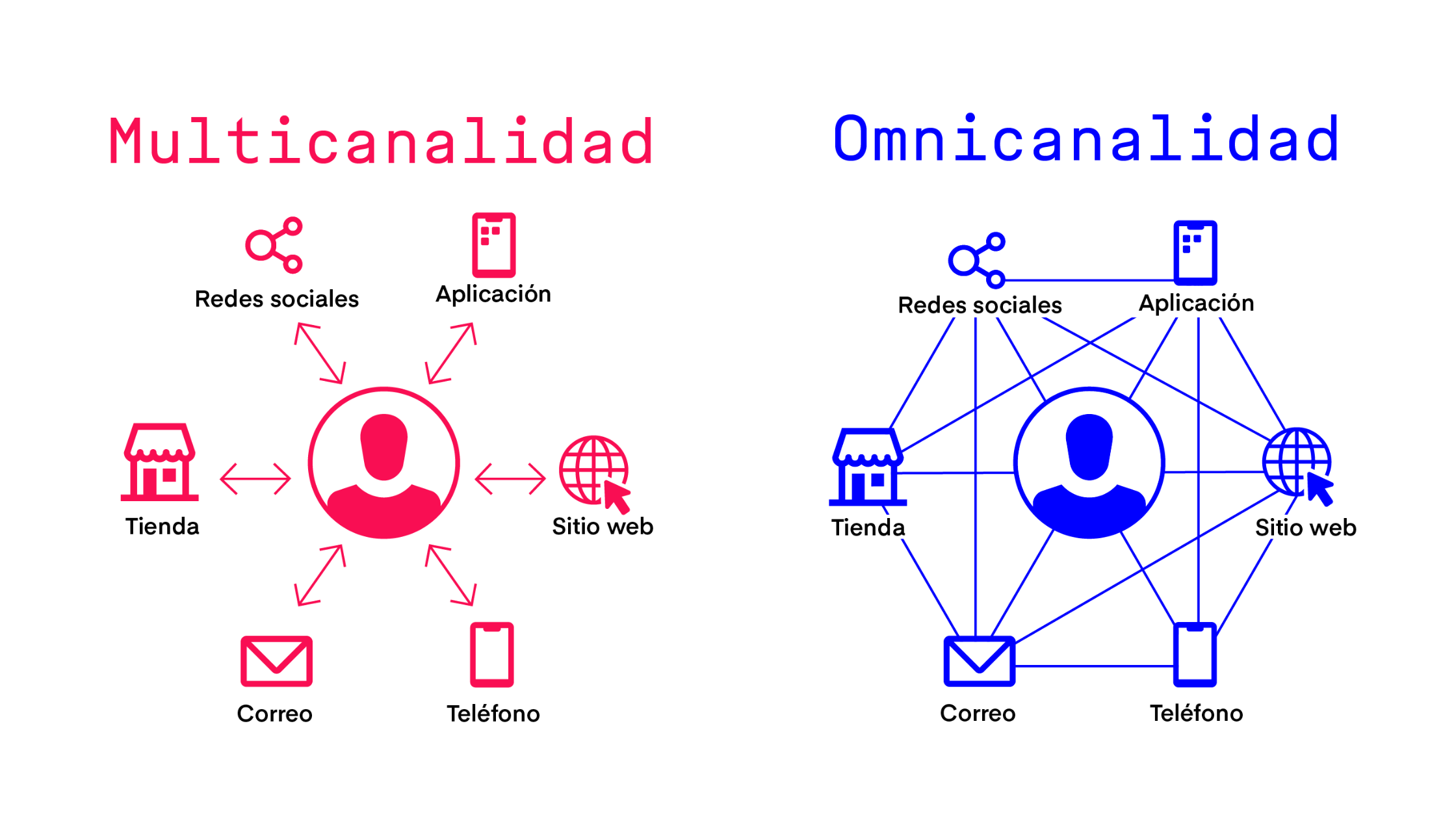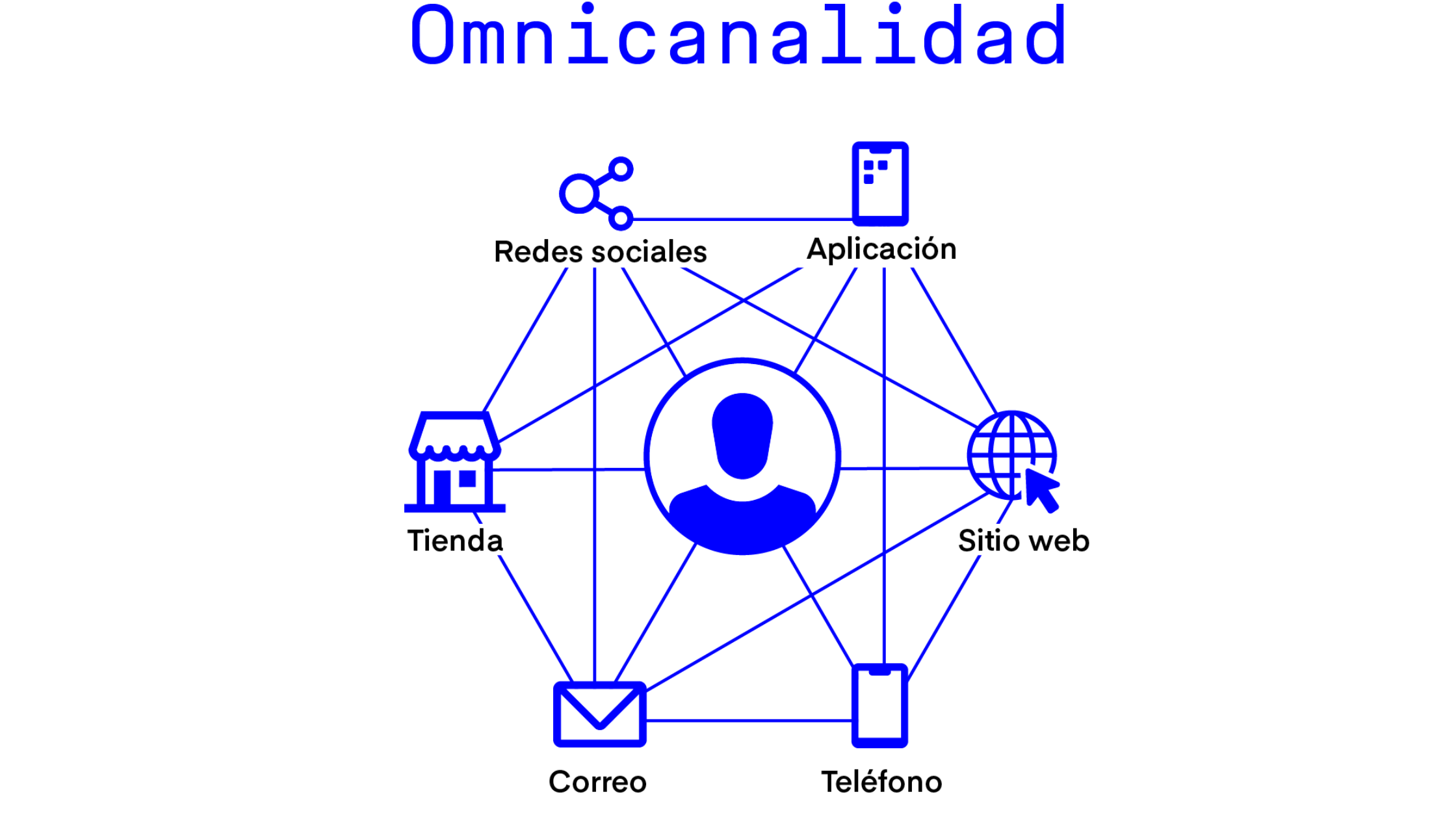Omnichannel: What is it and what are its advantages

Omnichannel is an integrated and connected consumer experience through all the channels of a company: mobile, desktop, or physical.
One of the major challenges for companies in this digital era is to create a great experience across all their sales channels. Whether a customer visits your physical store, enters your online store, requests product information on social media, or calls the customer service phone number, the experience you deliver must be excellent on each of these channels.
A good example of a company that offers an excellent experience to its customers across all its channels is Starbucks. Its customers can install its app to create a loyalty account. Users earn points each time they make a purchase. In addition, a user can place an order within the app to pick it up in the physical store without having to line up. When a customer makes a purchase through the app and accesses the cafeteria's internet, a message appears greeting him with his name.
By having information on its customers who are in its loyalty plans, they can send personalized messages, for example, wishing a customer a happy birthday or sending them discount coupons according to their consumption habits. This level of interconnected experience is what your business should aspire to.
One of the sales strategies that comes to resolve the challenge of maintaining a uniform experience across all sales channels is omnichannel.
¿What is Omnichannel?

Omnichannel is a uniform and connected experience across all of a company's channels, whether the customer is shopping on their mobile, computer, or in a physical store.
The reality is that customers move between online and offline channels to contact companies and make purchase decisions. 44% of customers conduct online research to learn about prices, features, discounts, or models before visiting a physical store.
After obtaining as much product information as possible from different sources, they make their final purchasing decision.
It is therefore important for your company to deliver a good customer experience in all its contact channels to encourage them to buy.
What is the difference between an omnichannel and a multichannel commerce?
Some companies may mistakenly believe that they are an omnichannel commerce by having more than one sales channel. However, this is not the case. To understand what an omnichannel strategy is, we must know the different definitions.
One channel: It is when you only have one sales channel. This channel can be your online store or physical store.
Multichannel: This occurs when you sell your products in different physical or online channels. Your customers can interact with you through the phone, social networks, ecommerce, or in-store.

Omnichannel: Like in multichannel, you have several sales channels in which customers can interact with your brand. The main difference between omnichannel and multichannel is that the experience in all channels is uniform, consistent, and connected to each other.
Differences between multichannel and omnichannel commerce
Multichannel | Omnichannel |
|---|---|
Different message for each channel | Same message across all channels |
Different user experience on each platform | Consistent user experience across all channels |
Manages all channels separately | Manages all channels as a whole |
Fragmented information by channel | Unified data from all channels |
Executes sales and marketing strategies separately for each channel | Can execute the same sales and marketing strategy across all channels |
The user has to follow up on their report in the same channel where it was opened | The user can open a report in one channel and follow up on it in another channel |
The user receives their order exclusively in the channel where they made their purchase | The user can buy online and pick up in-store. |
The point where a company really moves from multichannel to omnichannel is when all its channels are connected and a customer can switch from one channel to another smoothly without any friction in the process.
Some questions you can ask yourself to know if your business is truly omnichannel are:
Can my customer purchase in a physical store and follow up on their order by phone or mobile app?
Do all my channels have the same design line and tone of voice?
Can I launch the same marketing campaign through physical stores, website, mobile app, or email?
Can I find my users' information from a single platform?
Do I know when my user viewed a product online in my store and bought it in a physical store?
Characteristics of an Omnichannel Commerce
Centralized information from all channels
Within an omnichannel strategy, it is important that all customer information is centralized in one place so that you can know each interaction a customer has had with you through a mobile app, website, social media, phone, or physical store.
This way, you can carry out much more complex marketing strategies.
For example, if you know that a user usually buys many shirts and pants in your physical store, the next time they visit your online store you could show them similar products. You could even send them emails promoting the purchase of similar products.
Maintaining the same personality and brand across all channels
Part of a good omnichannel strategy is for your online store, physical store, or mobile app to handle the same line of communication.
It's not uncommon to see online stores that handle a different communication than physical stores, whether it be different graphic design or a different tone of communication.
Centralized and easily accessible communication
If a customer contacts you via WhatsApp to report a product problem, this information should be in a system that can be accessed by all teams from different channels. This way, if this same user calls your customer service the next day, the telephone advisor can know what the problem was from the beginning and can offer the customer a tangible solution.
Benefits of Omnichannel
Improves user experience
One of the great advantages of omnichannel is to offer a better user experience to your customers. When your customers can contact you through the channel that is most convenient for them, they have a better experience of your brand.
Increases sales
Implementing an omnichannel strategy can be costly in time, money, and resources. However, by doing so, you will increase your sales.
A study of 46,000 online buyers showed that omnichannel buyers spend 4% more on their in-store purchases and 10% more on their online purchases.
Increases customer loyalty
Omnichannel consumers not only spend more on their purchases, but they are also more loyal to your brand. The same study showed that these buyers after making a first purchase, logged in 23% more to the online store.
They were also much more likely to recommend the brand to family and friends.
Examples of Omnichannel
At the beginning of the article, we gave you the example of how Starbucks implements an omnichannel strategy. To give you a better idea of what your company can achieve by integrating all its sales channels, we leave you a few more examples of what other companies do.
Walmart
Walmart allows customers to make purchases on their online store or mobile app and pick up in their physical stores. Additionally, a customer can contact them to place orders or resolve delivery doubts through WhatsApp, Facebook, or Twitter. They also have their own app, cashi, that allows users to pay from their cell phone.
Ben & Frank
The lens store allows users to schedule their eye exams online to obtain their medical prescription. Additionally, customers can purchase their lenses online and pick them up in a physical store. They can even go to the physical store to have their eye exam and schedule the delivery of their lenses to their home.
Liverpool
At Liverpool, you can buy a product online and pick it up in their department stores. Whether you want to know the status of your delivery, product availability, store hours, installation services, you can get all this information immediately through WhatsApp or their social networks.
How do I create an omnichannel strategy?
1. Know your customer
Before carrying out an omnichannel strategy, the first thing you must do is a market study of who your customer is, what is their perception of your brand, and what are their consumption habits. This information will help you to select the channels in which you should be present.
2. Select the right channels
Your brand could be present in multiple channels such as: web, mobile, physical store, marketplaces, Facebook, Instagram, Whatsapp, telephone among others. You must select the channels that make the most sense with your customers' consumption habits.
3. Define a goal for each channel
Once you have selected the channels you want to be present on, you must define the main goal of each channel. For example, your eCommerce probably has the goal of allowing customers to see your product catalog and make online purchases, while the goal of having WhatsApp is to provide customer service to those who have questions about their order.
4. Connect all your channels
Once you have selected your channels and the goals you want to achieve, it is time to connect each of the sales channels to improve your users' experience. At this point, your business stops being multichannel and becomes an omnichannel commerce. To connect all your channels, it will be necessary for your company to adopt new technologies that allow you to track how customers interact with your brand across different channels.
5. Give maintainance to each channel
Being an omnichannel company is a constant job. Once all your channels are connected, it is necessary to maintain good performance in each channel and the connection between them is fluid as time passes.


